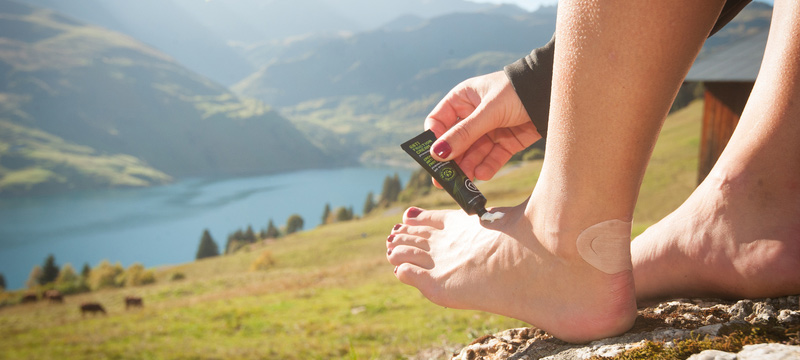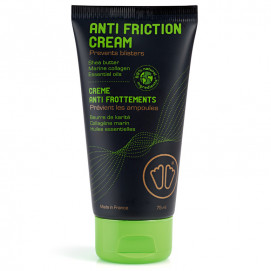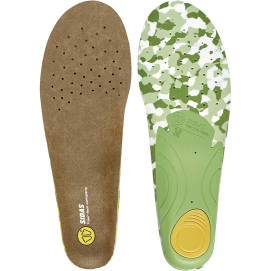 Start off your day of hiking on the right foot Read more
Start off your day of hiking on the right foot Read more Advice on how to protect your feet on a long hike
How to protect your feet on a hike lasting several days?
"One kilometre on foot wears out your shoes for good..."
So what about a long day of hiking? Or even worse: what about a walk in stages, over several days, or even weeks? Well it hurts your feet! Blisters, black nails, tendinitis... So many pains and wounds that could compromise your adventure. So here are some expert tips to protect your feet, avoid all those discomforts and reach your ultimate goal without a stone in your shoe.
OUR TEAM OF EXPERTS:
Marie MALIGORNE: is in charge of the Sidas Sports Orthopaedic Centre, she advises dozens of hikers every year who are preparing to set off on the paths of Saint-Jacques-de-Compostelle, the GR 20 or treks abroad.
FOUTRAK: Wildly enthusiastic about freedom and wide open spaces, Foutrak has a hiker's CV as long as her arm and as muscular as her legs. From Mont Blanc to Annapurna, from the Vanoise Glaciers to Madeira Island, she shares her vision and passion for trekking with thousands of her followers on Instagram.
Clément SCALLIET: is a physiotherapist and osteopath based in Lyon. He does business with all who are passionate about sport: athletes with Olympic ambitions to Sunday runners. He therefore knows well all the reactions of a moving body.
 PREPARATION
PREPARATION
We’re not born to hike, we can’t pretend to be a hiker, we become one. By accumulating kilometres and days of walking.
Preparation before a goal is therefore crucial to its success. Marie Maligorne is categorical: “It is not innate for modern man to walk 20 to 30 kilometres on a daily basis, on winding roads, even less so over several days.” This is all the more valid for the feet, the part of the body most solicited during a hike. If some have sea legs, the hiker must fashion mountain legs.
To be well prepared, would be:
→ Days of walking in advance, as training. Accustoming your feet to difference in heights, to climbs, descents, uncertain supports ... “The higher the objective, the more training and preparation must be applied,” confirms Foutrak, before moving on: “It is necessary to test on short hikes. Before going on an expedition, it is essential to spend at least one night in a shelter.” To see if our feet can take it and if we appreciate the atmosphere.
→ A complete check-up of your feet. Just as you revise a car before a long rally, you must pamper your feet before the start. Foutrak recommends “a pedicure a month before” when Marie suggests the technique of “tanning”: “Massaging your feet during the days before the hike, alternating daily lemon juice and moisturizer. A household remedy to make the skin very resistant without drying it.”
 ANTICIPATING
ANTICIPATING
Foutrak affirms with the tone of one who has already made the bitter experience of some errors: “Even before leaving, you can already know if the hike will turn out well or not!” Like preparation, anticipation is a key to success.
Good anticipation is therefore:
→ “Do not leave room for the unexpected!” Not even any improvisation. “All shelters or campsites must be booked in advance, note the itinerary on paper in the absence of a network, and identify sources of water and small grocery stores beforehand. Because we often tend to weigh down the bag as a precaution and therefore hurt our feet whereas the supply points are actually very regular...”
- → “NURSE AS YOU GO ALONG!” Marie Maligorne reminds us with so much confidence that one would think she was exclaiming in uppercase in the text. “At the slightest little sore, you have to stop and treat it. If you wait until the evening to relieve a blister or a black nail, it will be too late and you will not leave the next day!”
- → To be able to effectively treat on the ground and not to compromise your hike, you just need to have carefully prepared your first aid kit... We have therefore developed a complete kit for hiking including everything necessary to take care of your feet:
- Antifriction cream, to limit irritations related to long hours of walking
- A cold recovery gel to apply in the evening by way of recovery
- Foot Protector or Toe Cap, small light silicone dressings, imperceptible and very resistant to fight against the emergence or aggravation of blisters.
- Antifriction cream, to limit irritations related to long hours of walking
- → Finally, who says hiking over several days says management of effort. It is crucial not to set off too hard, not to start your journey by the most difficult stages. Progressiveness allows time for your body and feet to get used to the effort. “Progressive, especially the buildup!” Foutrak enthuses.

MASTERING YOUR MATERIAL
An old reflex pushes us to believe that new equipment will be more beneficial because it’s more efficient, more resistant... “Not at all!” corrects Foutrak. “The most important thing is to feel at ease with your equipment, to know it, to have experienced it, to have got used to it...”
For a good mastery of your material:
- → Marie Maligorne notes: “I think the biggest mistake that can be made is to go with new shoes. Definitely not! They must have reached half of their life expectancy, having already been used to walk 300 or 400 km.” The right hiking shoe is one that is perfectly suited to your practice, your body and your foot.
- → The same goes for the OUTDOOR insoles that we have designed to protect your foot during the whole hike: “You have to have been on at least 7 or 8 outings with the insole to feel all the benefits in terms of comfort and safety.”
- → Clément Scalliet, accustomed to healing hikers’ back or knee pain at the back end of summer, insists on the interest of poles, “a valuable help on long walks over several days to distribute the effort on the different muscles of the body."

RECOVERY
Like the Tour de France cyclist who mounts his bike every day, the hiker resumes his path each morning. So that this moment remains a pleasure and not a constraint, it is essential to optimize recovery, once the day of hiking has ended.
A good recovery is:
- → Compel yourself to carry out an effective routine as soon as you arrive at the shelter: repack your bag, dry your things...
- → Relieve your feet:
- By performing first aid, disinfecting and drying a blister, cutting one’s nails that are too long...
- By putting on recovery sandals which make it possible to liberate the foot from the grip of the shoe. “Very light, these do not weigh down the bag and their support at the level of the arch allows a good venous return,” specifies Marie Maligorne. In the same optic of recovery, compression socks can also prove valuable.
- By respecting a short massage protocol, particularly the feet. Foutrak provides evidence to support her words: “I relieve the fascia and the plantar arch by rolling a small ball dedicated to this function after each long day. I noticed a huge difference the next day, with a real stiffness in the foot whenever I skipped this crucial step...”
- During this time, shoes and insoles must be put to dry thanks to our shoe dryers.
Respect these few tips to protect your feet during multi-day hikes, is the guarantee of leaving each morning with freshness, as if it was the first day, and the desire to enjoy it, as if it was the last.





